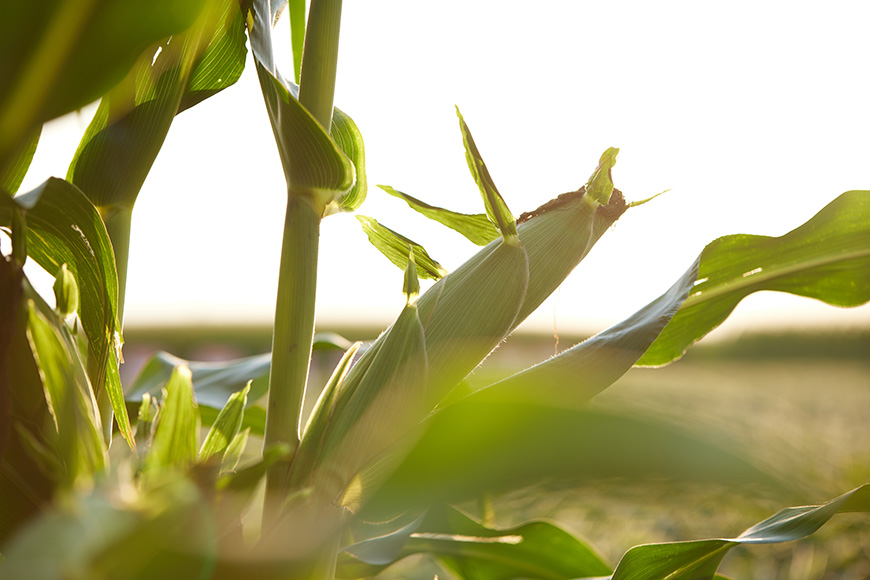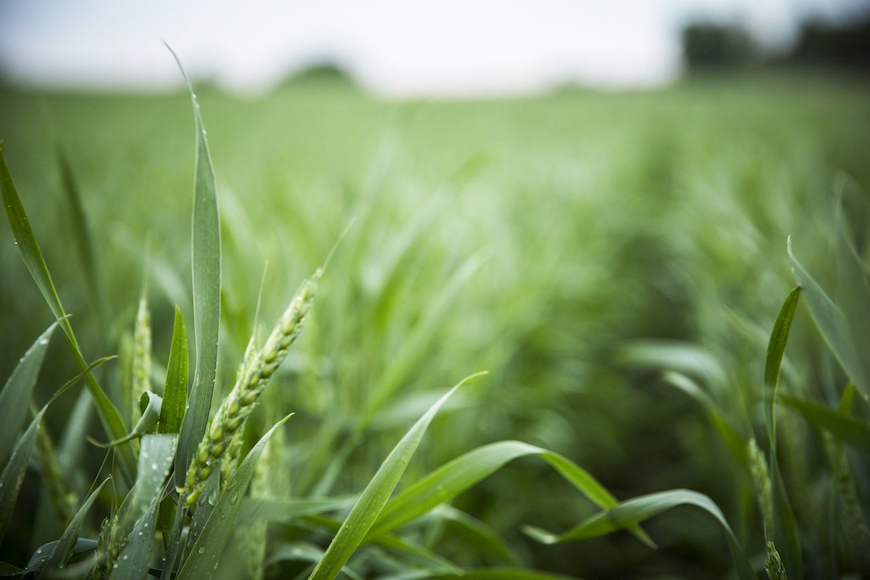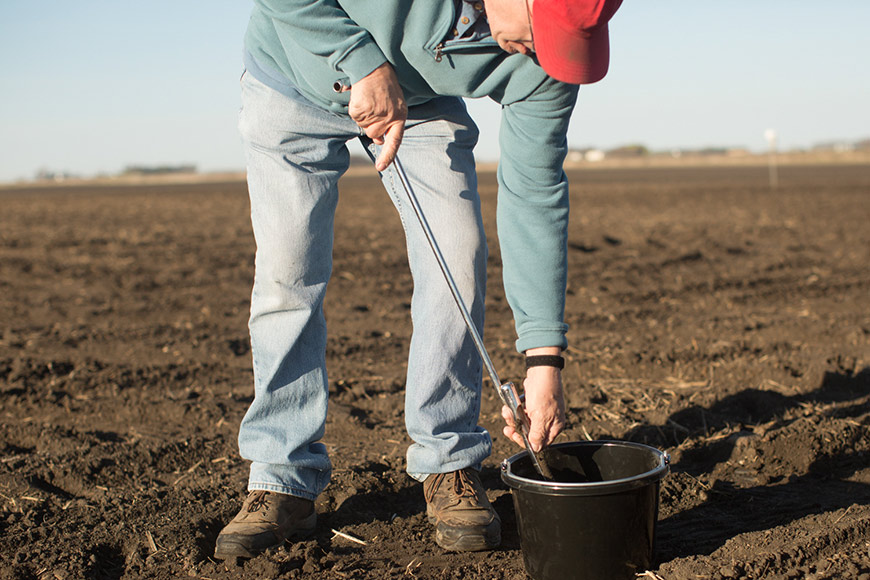Why You Should Consider a Pre-Tassel Fungicide Application

Answer Plot® research shows that fungicide application timing can significantly impact return on investment and, in some situations, two applications can be more profitable than one. So, when should you plan to target your applications, and does a multi-pass fungicide program make economic sense for your operation? Those answers will vary for every grower, but these guidelines and the expertise of your trusted advisor can help you optimize your plant health strategy.
Capitalize on Logistical Benefits
One benefit of an earlier fungicide application is more manageable field logistics. If you need help covering all your acres in a timely manner, an earlier fungicide application can help widen coverage windows. In many cases, you may be able to apply fungicides yourself using a ground sprayer before corn tasseling. Starting early allows you to cover more acres to stay ahead of disease development. It also reduces reliance on aerial applicators, who may be difficult to schedule during seasonal peaks.
Extend the Window for Disease Protection
Applying a pre-tassel fungicide offers plant health benefits and can extend the window of disease protection. Strobilurin and SDHI chemistries are preventive fungicides that effectively kill germinating fungus spores and offer plant health benefits. Products with these active ingredients may be a good option for a first-pass fungicide application and then disease protection can be extended with a second pass at the R1 or R2 growth stage.
Maximize the Potential of High-Yielding Crops
A two-pass fungicide program can help maximize the potential of high-yielding corn crops by promoting biomass production. As mentioned, strobilurin fungicides promote plant health and more chlorophyll production in the crop. As plant biomass increases, the crop has more opportunity to harness energy to support increased grain production. The longer your crop can keep green plant tissue, the greater its yield potential will be. Green plant tissue also helps mobilize and redistribute sugars to the developing kernels during reproductive stages.
Protect High-Risk Fields
High-yielding fields aren’t the only situation where a two-pass fungicide program is warranted. Fields with a history of high disease pressure or a higher risk for disease development can also benefit. Corn-on-corn rotations and high fertility or heavily manured fields may harbor more disease inoculum. In those situations, there are likely more pathogens that overwinter on plant residue, and it only takes conducive environmental conditions for a yield-threatening disease outbreak to occur. Applying a pre-tassel fungicide can help protect those vulnerable fields and prevent diseases from developing.
Improve Profitability Potential
Every year, WinField United collects response-to fungicide data for hybrids in our portfolio and those of our partner brands through our Answer Plot program. Using this information, you can identify which of your fields may benefit from a two-pass fungicide application. Hybrids with a higher response score are likely candidates for a pre-tassel fungicide application. In some hybrids, we’ve seen a 30-plus bushel response to fungicide applications, even without disease. Knowing your hybrids’ response-to scores can help you prioritize your fungicide investments where the highest return is likely.
Be Strategic With a Two-Pass Fungicide Program
If you want to take advantage of the benefits of a two-pass program, I recommend developing a strategy with your end goals in mind. For example, if you have no disease and you’re using a two-pass system for preventative control, I typically recommend spraying at V12 (plus or minus two growth stages) and again at R1 to R2. Considering the fungicides you’ll apply is critical because some products offer longer protection than others.
Low-tier fungicides that typically contain a single mode of action provide the shortest window of protection, while top-tier fungicides with multiple modes of action provide the longest. Consider your hybrid’s maturity and geographic location to decide how long you must protect your crop between applications. For example, if there’s a 30- to 35-day window to cover, you’ll probably want to spray a top-tier fungicide first. Then re-evaluate disease pressure or the potential for disease pressure to inform which products you’ll spray for the second application.
If you live in a high tar spot or southern rust region where disease often shows up later in the season, you may get better results with a mid-tier application first, followed by a top-tier product with multiple modes of action to manage the late onset of diseases.
Your strategy will likely change every season depending on the environmental conditions and disease pressure potential. Every farm will have slightly different variables to consider, so I recommend consulting with your trusted advisor to map out a plan well ahead of the time you plan to make your first application.
Aim for Maximum Coverage
Most fungicides don’t offer considerable systemic movement in the plant, therefore good spray coverage is critical for effective disease control. I recommend a spray volume of 15 to 20 gallons per acre for ground applications to maximize coverage. Choosing appropriate spray nozzles to manage droplet size for more consistent coverage is also important.
An effective adjuvant helps optimize spray droplet size and helps get more active ingredients into the crop’s canopy. For pre-tassel fungicide applications, there is concern about adjuvants that contain certain surfactants that could increase the risk for arrested ear development. MasterLock® adjuvant is an ideal option for pre-tassel fungicide applications because it does not contain NPE, the class of surfactant associated with arrested ear development. It has been rigorously tested in early-season fungicide applications with no negative impacts on ear development. MasterLock adjuvant helps optimize droplet adhesion, which reduces bounce and increases droplet sticking and spreading for improved fungicide contact and coverage.
As you wrap up planting and look ahead to in-season management, be sure you’ve got a disease control plan for every field. Your WinField United retailer can provide data and recommendations to support your season-long plant health goals.
All photos are either the property of WinField United or used with permission.
© 2024 WinField United. Important: Before use always read and follow label instructions. Crop performance is dependent on several factors many of which are beyond the control of WinField United, including without limitation, soil type, pest pressures, agronomic practices and weather conditions. Growers are encouraged to consider data from multiple locations, over multiple years and to be mindful of how such agronomic conditions could impact results. Answer Plot, MasterLock and WinField are trademarks of WinField United.
Capitalize on Logistical Benefits
One benefit of an earlier fungicide application is more manageable field logistics. If you need help covering all your acres in a timely manner, an earlier fungicide application can help widen coverage windows. In many cases, you may be able to apply fungicides yourself using a ground sprayer before corn tasseling. Starting early allows you to cover more acres to stay ahead of disease development. It also reduces reliance on aerial applicators, who may be difficult to schedule during seasonal peaks.
Extend the Window for Disease Protection
Applying a pre-tassel fungicide offers plant health benefits and can extend the window of disease protection. Strobilurin and SDHI chemistries are preventive fungicides that effectively kill germinating fungus spores and offer plant health benefits. Products with these active ingredients may be a good option for a first-pass fungicide application and then disease protection can be extended with a second pass at the R1 or R2 growth stage.
Maximize the Potential of High-Yielding Crops
A two-pass fungicide program can help maximize the potential of high-yielding corn crops by promoting biomass production. As mentioned, strobilurin fungicides promote plant health and more chlorophyll production in the crop. As plant biomass increases, the crop has more opportunity to harness energy to support increased grain production. The longer your crop can keep green plant tissue, the greater its yield potential will be. Green plant tissue also helps mobilize and redistribute sugars to the developing kernels during reproductive stages.
Protect High-Risk Fields
High-yielding fields aren’t the only situation where a two-pass fungicide program is warranted. Fields with a history of high disease pressure or a higher risk for disease development can also benefit. Corn-on-corn rotations and high fertility or heavily manured fields may harbor more disease inoculum. In those situations, there are likely more pathogens that overwinter on plant residue, and it only takes conducive environmental conditions for a yield-threatening disease outbreak to occur. Applying a pre-tassel fungicide can help protect those vulnerable fields and prevent diseases from developing.
Improve Profitability Potential
Every year, WinField United collects response-to fungicide data for hybrids in our portfolio and those of our partner brands through our Answer Plot program. Using this information, you can identify which of your fields may benefit from a two-pass fungicide application. Hybrids with a higher response score are likely candidates for a pre-tassel fungicide application. In some hybrids, we’ve seen a 30-plus bushel response to fungicide applications, even without disease. Knowing your hybrids’ response-to scores can help you prioritize your fungicide investments where the highest return is likely.
Be Strategic With a Two-Pass Fungicide Program
If you want to take advantage of the benefits of a two-pass program, I recommend developing a strategy with your end goals in mind. For example, if you have no disease and you’re using a two-pass system for preventative control, I typically recommend spraying at V12 (plus or minus two growth stages) and again at R1 to R2. Considering the fungicides you’ll apply is critical because some products offer longer protection than others.
Low-tier fungicides that typically contain a single mode of action provide the shortest window of protection, while top-tier fungicides with multiple modes of action provide the longest. Consider your hybrid’s maturity and geographic location to decide how long you must protect your crop between applications. For example, if there’s a 30- to 35-day window to cover, you’ll probably want to spray a top-tier fungicide first. Then re-evaluate disease pressure or the potential for disease pressure to inform which products you’ll spray for the second application.
If you live in a high tar spot or southern rust region where disease often shows up later in the season, you may get better results with a mid-tier application first, followed by a top-tier product with multiple modes of action to manage the late onset of diseases.
Your strategy will likely change every season depending on the environmental conditions and disease pressure potential. Every farm will have slightly different variables to consider, so I recommend consulting with your trusted advisor to map out a plan well ahead of the time you plan to make your first application.
Aim for Maximum Coverage
Most fungicides don’t offer considerable systemic movement in the plant, therefore good spray coverage is critical for effective disease control. I recommend a spray volume of 15 to 20 gallons per acre for ground applications to maximize coverage. Choosing appropriate spray nozzles to manage droplet size for more consistent coverage is also important.
An effective adjuvant helps optimize spray droplet size and helps get more active ingredients into the crop’s canopy. For pre-tassel fungicide applications, there is concern about adjuvants that contain certain surfactants that could increase the risk for arrested ear development. MasterLock® adjuvant is an ideal option for pre-tassel fungicide applications because it does not contain NPE, the class of surfactant associated with arrested ear development. It has been rigorously tested in early-season fungicide applications with no negative impacts on ear development. MasterLock adjuvant helps optimize droplet adhesion, which reduces bounce and increases droplet sticking and spreading for improved fungicide contact and coverage.
As you wrap up planting and look ahead to in-season management, be sure you’ve got a disease control plan for every field. Your WinField United retailer can provide data and recommendations to support your season-long plant health goals.
All photos are either the property of WinField United or used with permission.
© 2024 WinField United. Important: Before use always read and follow label instructions. Crop performance is dependent on several factors many of which are beyond the control of WinField United, including without limitation, soil type, pest pressures, agronomic practices and weather conditions. Growers are encouraged to consider data from multiple locations, over multiple years and to be mindful of how such agronomic conditions could impact results. Answer Plot, MasterLock and WinField are trademarks of WinField United.




